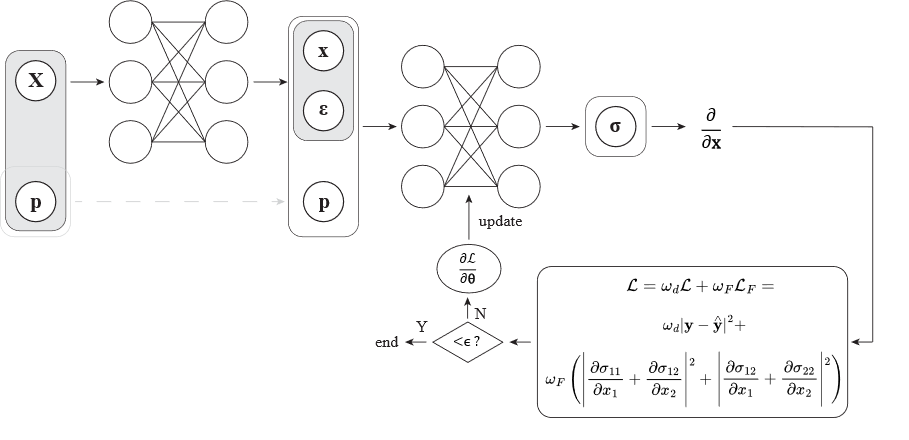Duration: 2022-2026
Funding: Digital Twin
ABOUT THE PROJECT

In modern industries, digital twins have become a powerful tool for replicating physical assets, offering an efficient alternative to costly and time-consuming analyses. Their growing importance in Industry 4.0 stems from their ability to support the demand for highly customized products with minimal delivery times. By faithfully mirroring physical assets, digital twins enhance production security and safety, ensure high product quality, and help achieve zero-defect manufacturing. However, to maintain these advantages, a digital twin must be continuously enriched and updated in real-time with measurement data.
Despite their potential, many data-driven models used as digital twins lack an understanding of the underlying physics, making them less reliable. To address this, hybrid models have emerged as a promising solution, integrating physics-based methods with data-driven approaches. By incorporating surrogate models in place of traditional physics-based models, computational costs can be reduced, allowing for more efficient design exploration and new opportunities.
GOALS
The goal of this project is to develop a hybrid model capable of identifying the root cause of deviations in critical-to-quality parameters. The model integrates data-driven machine learning (ML) techniques to predict the final product's features in a multi-stage manufacturing process. A surrogate ML model is used to provide fast and accurate predictions, leveraging data from finite element simulations as ground truth. To efficiently explore the design space, an advanced sampling strategy is required.

Multi-stage process used in this project as study case. The hybrid model is trained using the information obtained from the last two stages (drawing and re-drawing).
To enhance the surrogate model, physical laws and system equations are incorporated into training. Specifically, a physics-informed recurrent neural network (PIRNN) is employed to capture history-dependent elastoplastic behavior. The gap between the PIRNN predictions and real-world measurements
is addressed through an auxiliary data-driven model.

Possible physics-informed recurrent neural network for the predictions of displacement and stresses. The process parameters are passed as inputs to explore the design space.
Particle filtering techniques play a crucial role in hybrid modeling, enabling the seamless integration of the physics-based PIRNN with the data-driven model. These filters are particularly effective for highly nonlinear systems where traditional filtering methods fail.
Ultimately, the hybrid model is designed to perform traceability analysis, identifying the causes of deviations in output features across multiple consecutive stages of the manufacturing process. The study case used in this project is two-step drawing process (drawing and re-drawing) given by Philips.
PARTNERS




